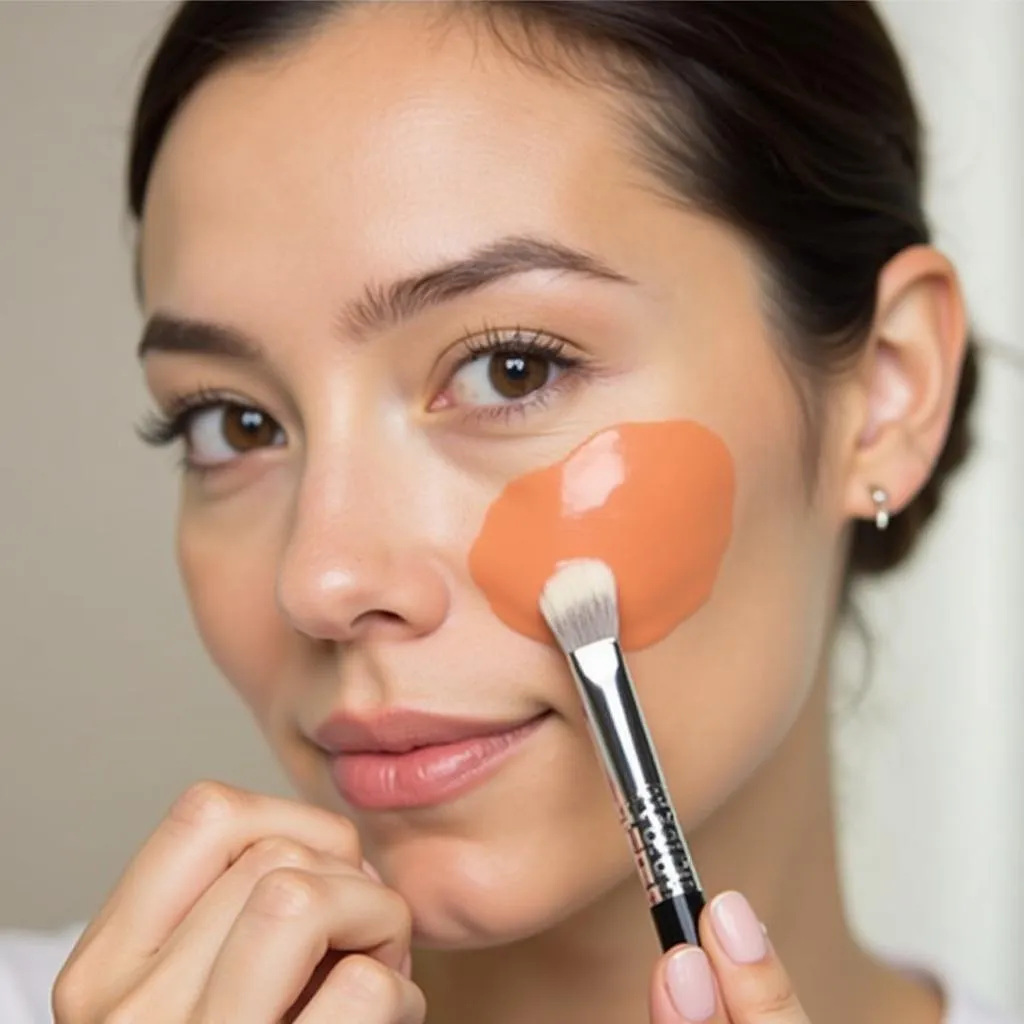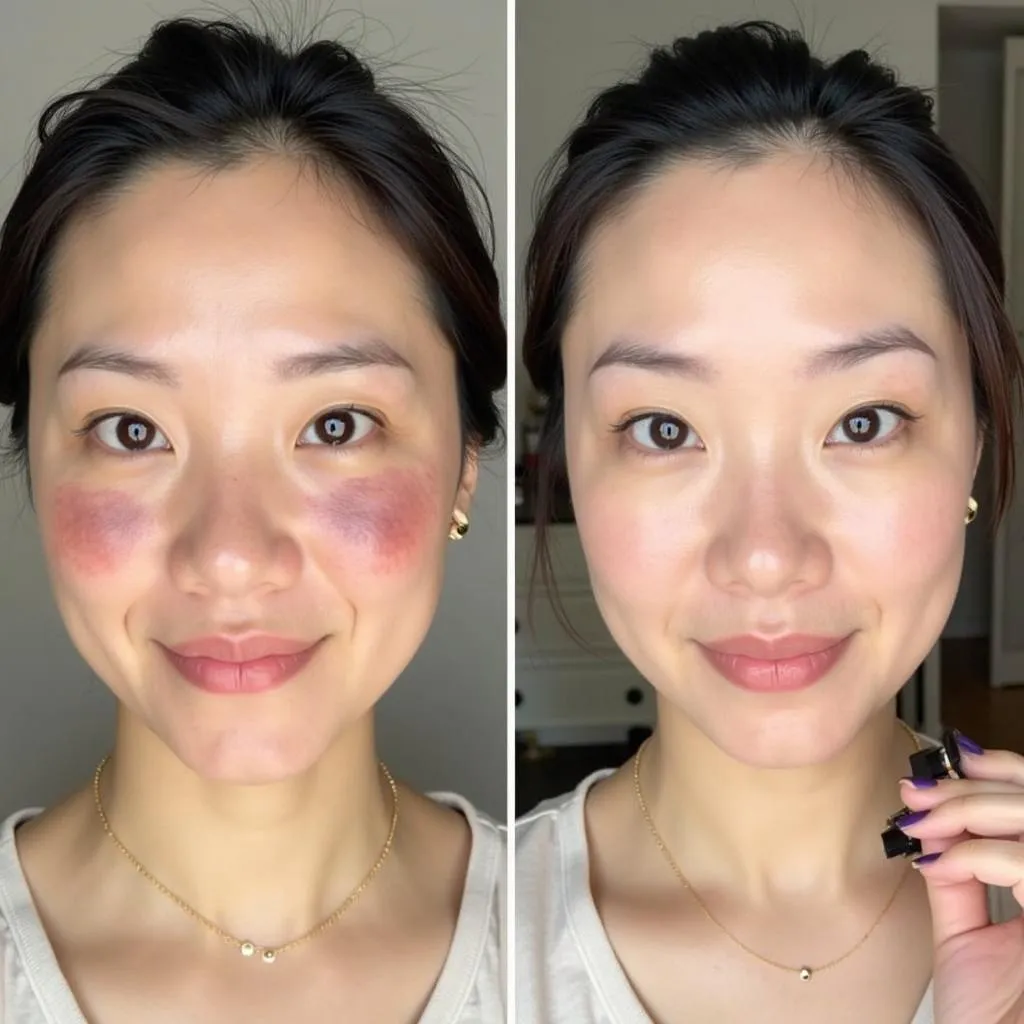Dark spots, also known as hyperpigmentation, can be a common skin concern for many. They can appear due to various factors like sun exposure, acne, or hormonal changes. While there are many ways to address dark spots, color corrector is a popular and effective option.
In this guide, we’ll explore the world of color correctors and delve into how to effectively use them for minimizing the appearance of dark spots.
What is Color Corrector?
Color corrector is a type of makeup that helps to neutralize and balance out skin discoloration. It works by using complementary colors to counter the appearance of dark spots. For example, a green color corrector can help to neutralize redness, while a peach or orange color corrector can help to brighten and lighten dark areas.
How Does Color Corrector Work on Dark Spots?
Color corrector works by utilizing the principles of color theory. Just like mixing paints, certain colors cancel each other out. For dark spots, we often use peach or orange color correctors to neutralize the darker tones. The pigment in these color correctors helps to camouflage the appearance of the spots, creating a more even skin tone.
How to Use Color Corrector for Dark Spots: A Step-by-Step Guide
Here’s a simple guide to using color corrector for dark spots:
- Cleanse and Prep Your Skin: Start by cleansing your face with a gentle cleanser. Apply a moisturizer to hydrate your skin and create a smooth base for makeup.
- Apply a Primer: Using a primer will help to create an even canvas for the color corrector and make it last longer.
- Choose the Right Color Corrector: Choose a peach or orange color corrector for dark spots. It’s important to select a shade that complements your skin tone.
- Apply Color Corrector Directly to Dark Spots: Use a small brush or your fingertip to apply the color corrector directly to the dark spots. Be sure to blend the edges carefully to avoid any harsh lines.
- Set with Foundation: Once the color corrector is blended, apply your foundation to cover the area and create a flawless finish.
- Apply Concealer (Optional): If you have particularly noticeable dark spots, you can use a concealer to further cover them.
Tips for Using Color Corrector for Dark Spots
Here are a few extra tips to get the best results:
- Use a Light Hand: Start with a small amount of color corrector and build up coverage as needed. Too much can lead to a cakey appearance.
- Blend Thoroughly: Make sure you blend the edges of the color corrector carefully to avoid any harsh lines or streaks.
- Consider Using a Sponge: A damp makeup sponge can be helpful for blending the color corrector smoothly into the skin.
- Set with Powder: Using a setting powder will help to keep the color corrector and foundation in place for longer.
Frequently Asked Questions
1. Can I use color corrector every day?
Yes, you can use color corrector every day. It’s a great way to even out skin tone and minimize the appearance of dark spots.
2. Is color corrector better than foundation alone?
Color corrector is not a replacement for foundation, but it can be used in conjunction with foundation to achieve a more even skin tone. It acts as a targeted solution for specific areas of discoloration.
3. How long does color corrector last?
The longevity of color corrector depends on the brand and formula, but generally, it should last for several hours.
4. Can I use color corrector on sensitive skin?
If you have sensitive skin, you may want to test a small amount of color corrector on a less sensitive area before applying it to your face. Look for products that are specifically designed for sensitive skin.
Get Started Today!
Ready to start your journey to a more even complexion? Contact Color Box Hà Nội today to learn more about color correctors and find the perfect shade for your skin tone. We’re here to help you achieve your skin goals.
 Applying Color Corrector to Dark Spots
Applying Color Corrector to Dark Spots
 Before and After Color Corrector Results
Before and After Color Corrector Results
Call us at [phone number] or email us at [email address] to schedule your consultation. We look forward to helping you embrace your beautiful skin.